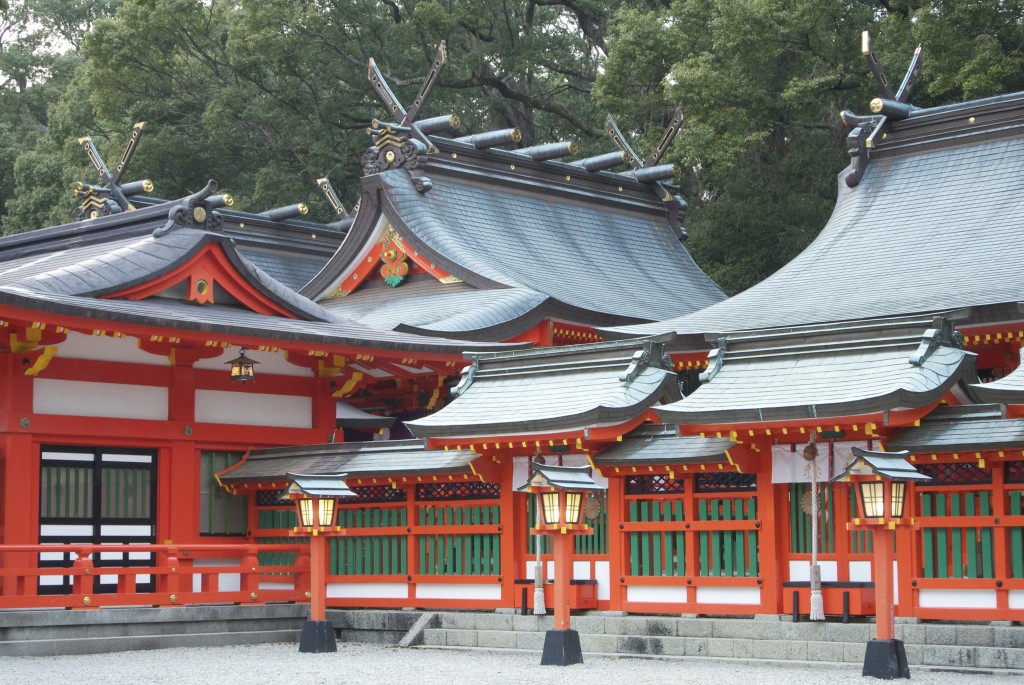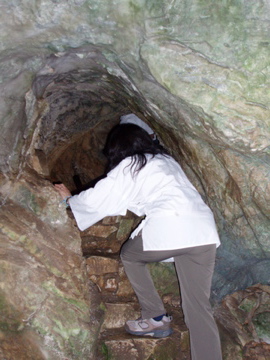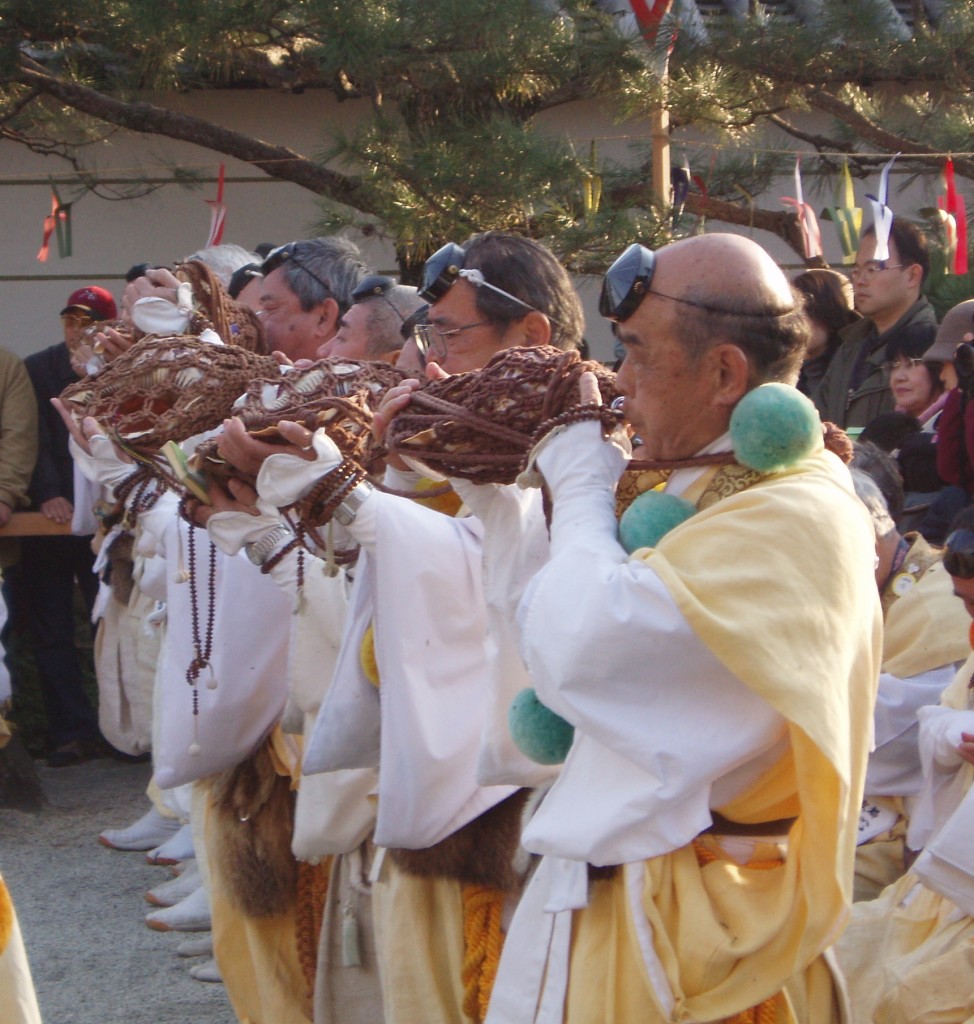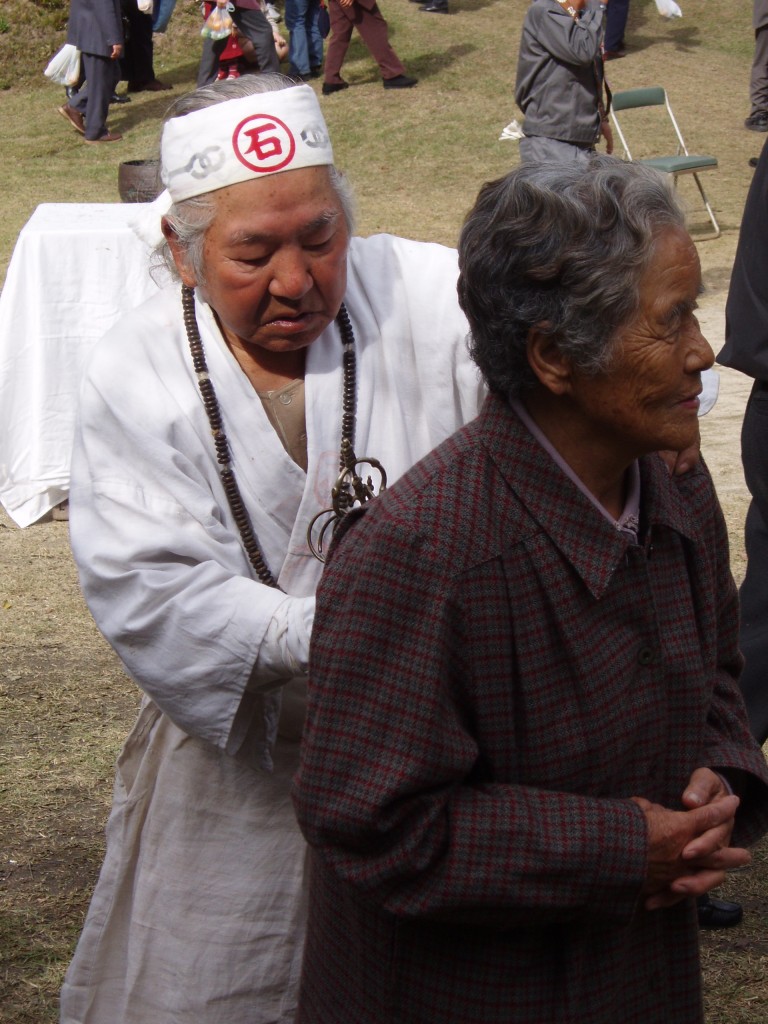
Hayatama Shrine in Shingu city stands at the mouth of the Kumano River, where it flows into the Pacific Ocean. There is a wooden plaque near the entrance of the Haiden (Worship Hall), on which, according to Paul Swanson, is written the following:
The first great spiritual place of worship in Japan, The foundation of the Three Kumano Gongen (Shingu, Nachi, Hongu).
Gongen is a deeply syncretic term, indicating Japanese manifestations of the Buddhas. In other words, kami acting as local avatars for their universal counterparts. “It is a word coined by the followers of esoteric Buddhism to explain the unity of the Buddhas and the kami,’ writes Paul Swanson in his online paper, The Kumano Area and the Roots of Shugendo: A Study in Eclectic Japanese Religion‘.

For those drawn to nature worship, nothing could be more appealing than Shugendo and their tradition of ‘entering the mountains’. The thinking is simple. Mountains are sacred space. Buddhas and kami manifest there. Humans can tap into their power by ‘lying in the mountains’, worshipping and doing ascetic exercises.
Since ancient times mountains have been seen as sacred, not only because they are the closest places on earth to the Upper World but also because the deceased were buried on their lower slopes. They were thus the site of both animist and ancestral spirits. Later esoteric Buddhism came to site their temples on mountains too.

According to tradition, Shugendo was founded by En no Gyoja in the seventh century, and later split into two groups, one attached to Tendai Buddhism and one to Shingon. The austerities they carried out ranged from climbing steep cliffs, praying in caves, and cold water austerities. Through entering the mountains one comes close to death, and on returning one is reborn.
Fasting, sleeplessness and hard hiking courses inevitably induce a change in consciousness. As a result the return from the mountains brings a sense of reinvigoration and enhanced power, enabling practitioners to carry out healing and other socially beneficial activities.
For a detailed account of a Shugendo mountain experience by a group based at Kyoto’s Shogo-in, see the first chapter of Paul Swanson’s paper cited above. It’s very similar to an account by Gary Snyder of his experience in the 1950s when he was dangled over the side of a cliff as part of a practice to create in the practitioner a change for the better.


Leave a Reply